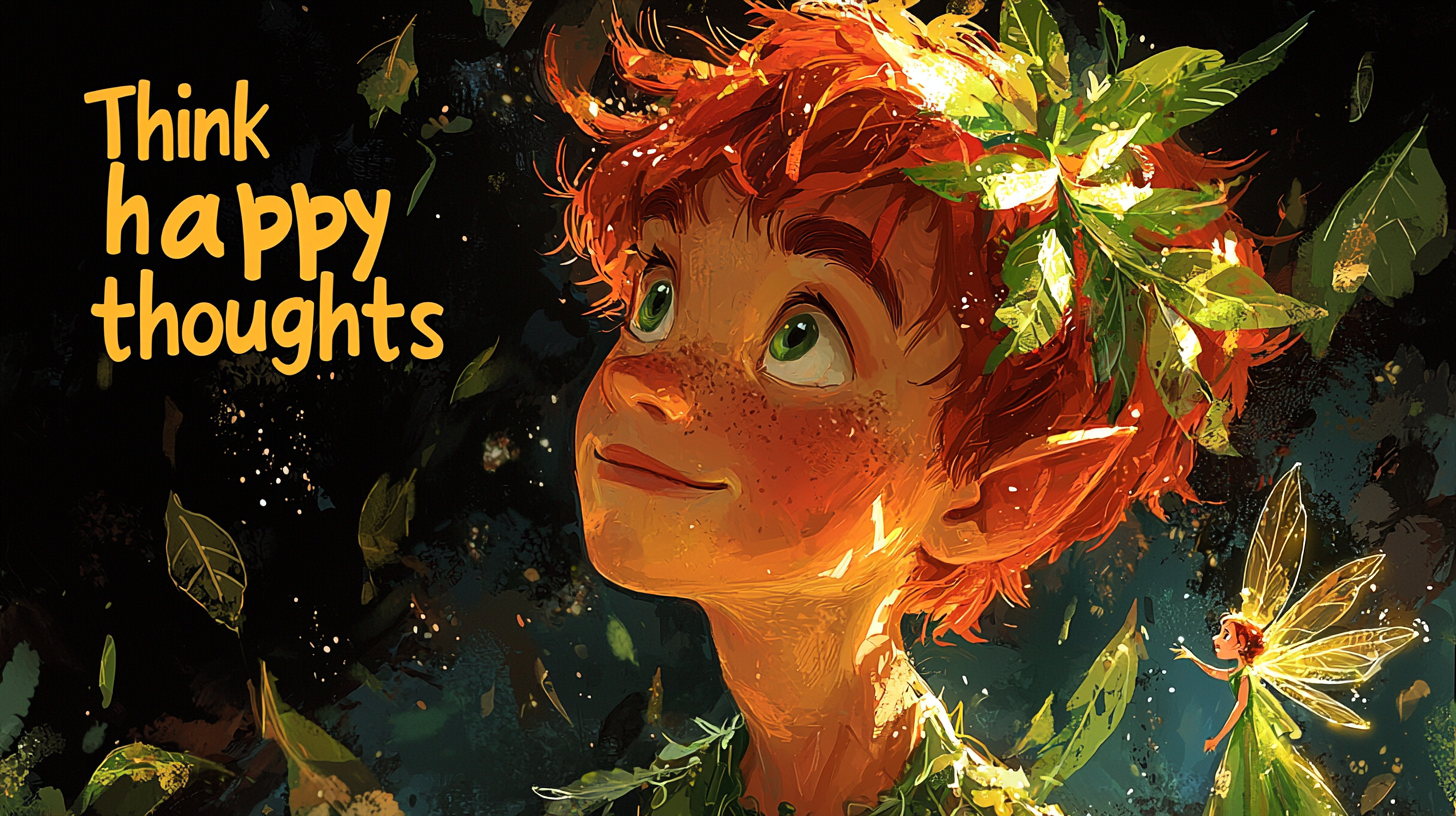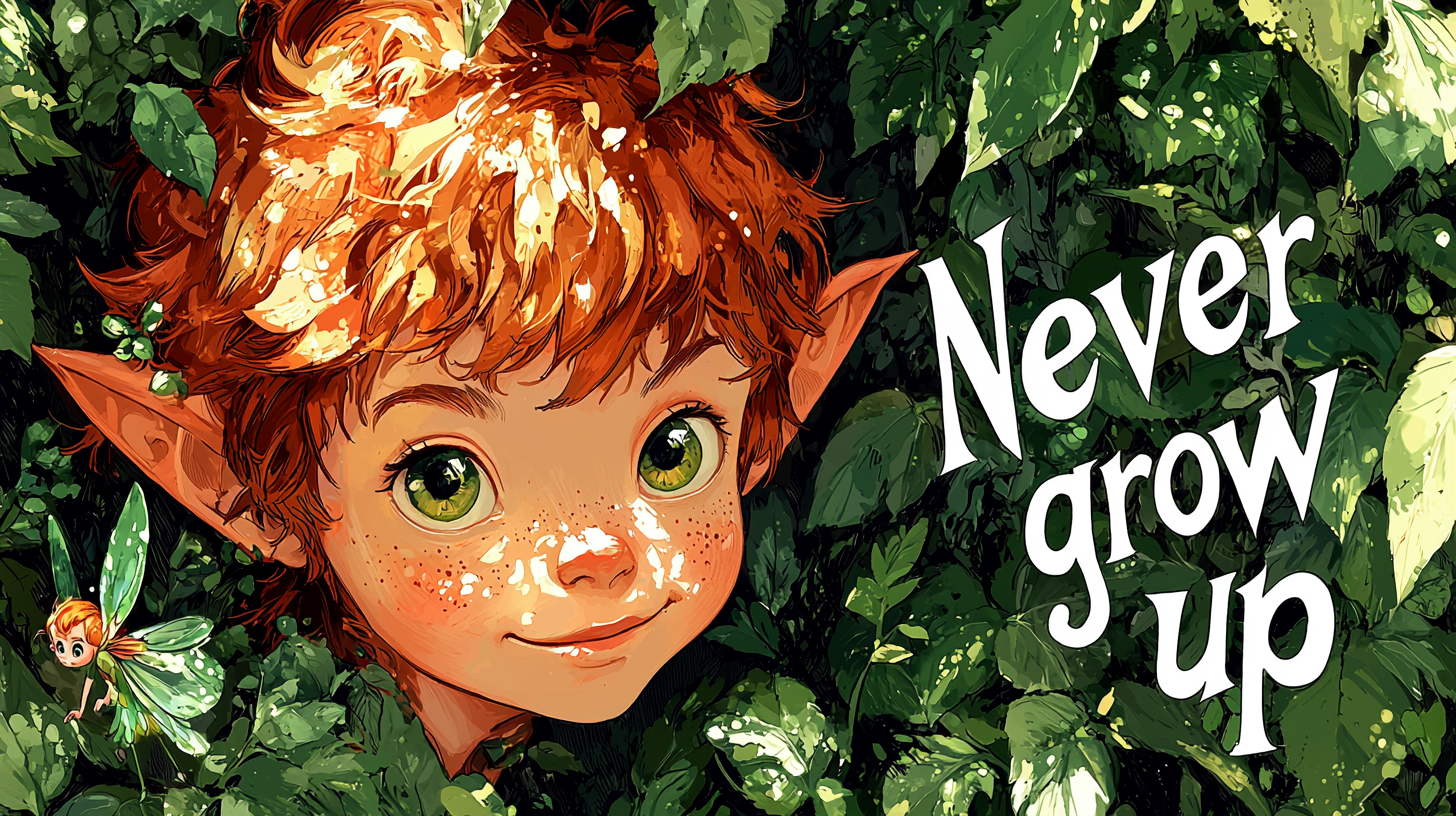Peter Pan sat atop a chimney on the rooftops of London, his legs dangling over the edge.The moon hung high in the night sky, casting a silver glow over the city below.The streets were quiet, and the only sounds were the distant chimes of Big Ben and the rustling of the wind.Peter gazed out over the countless rooftops, his eyes filled with wonder and a hint of longing."I wish there was more to this world than just these rooftops," he mused aloud.The cool breeze tousled his brown hair as he took a deep breath of the crisp night air.The lights of London twinkled like stars fallen to the earth, but Peter yearned for something beyond the familiar sights of the city.Suddenly, a faint tinkling sound caught his attention.He turned his head, listening intently."What's that?" he whispered.The sound was like tiny bells ringing softly in the distance.Peter stood up on the narrow ledge, balancing with ease.His green tunic fluttered in the wind as he scanned the rooftops.A tiny light flickered near a cluster of chimneys not far away.It darted in and out of sight, moving playfully among the shadows.Peter's eyes widened with curiosity."A light? Up here?" he wondered.Without hesitation, he leaped to the next rooftop, his feet landing lightly on the tiles.As he drew closer, the tinkling grew louder, and the light became brighter.The glow danced around a weather vane shaped like a rooster.Peter approached cautiously."Hello?" he called out.The light zipped behind a chimney, and Peter chuckled."Don't be shy! I won't hurt you," he said with a smile.Peeking around the chimney, he finally got a glimpse of the source of the light.It was a tiny figure with shimmering wings that sparkled like diamonds.She had long golden hair tied up in a bun and wore a dress made of green petals.Peter gasped."A fairy!" he exclaimed.The fairy looked at him with twinkling eyes and chimed melodically.Peter grinned."I'm Peter Pan. Who are you?"She made more tinkling sounds and pointed to herself.Peter scratched his head."I wish I could understand you," he said.The fairy thought for a moment, then waved her hands.A shower of pixie dust formed glowing letters in the air: T-I-N-K-E-R B-E-L-L."Tinker Bell!" Peter read aloud."It's nice to meet you, Tinker Bell."She nodded enthusiastically and flew in a circle around his head, leaving a trail of sparkles.Peter laughed."You're amazing!" he said.Tinker Bell pointed toward the horizon, where the stars met the edge of the sky.She chimed excitedly."Do you come from somewhere far away?" Peter asked.She nodded and gestured again, creating images of forests, mountains, and oceans with her pixie dust.Peter watched in awe."That place looks incredible! What's it called?"She spelled out another set of letters: N-E-V-E-R-L-A-N-D."Neverland," Peter whispered."It sounds like a place full of adventure."Tinker Bell smiled and beckoned him to follow her.Peter hesitated for just a moment."But I've never left London," he said softly.He looked back at the city—the Thames River winding through the buildings, the Tower Bridge illuminated against the darkness, the familiar sights of his home.Then he glanced at Tinker Bell, her eyes filled with excitement and possibility."Maybe it's time for something new," he decided."Lead the way, Tinker Bell!"She clapped her hands, and a burst of pixie dust enveloped them both.Peter felt a tingling sensation, and suddenly his feet lifted off the ground.He laughed with delight."I'm flying!" he shouted.Together, they soared above the rooftops.Peter looked down at the streets of London—the lampposts lining the avenues, the carriages parked along the cobblestone roads, the people who seemed no bigger than ants.The city that once felt so big now looked small beneath them.They flew past landmarks like St. Paul's Cathedral and the British Museum.Peter pointed excitedly."Look, Tinker Bell! There's Buckingham Palace!"She nodded, her wings shimmering as they glided through the night sky.Peter felt exhilarated.The stars seemed close enough to touch, and the moonlight bathed everything in a magical glow.As they flew higher, Peter's worries faded away.He realized that there was a whole world beyond the familiar sights of London—a world filled with wonders he had yet to discover."Thank you for showing me this," he said to Tinker Bell.She smiled and gestured ahead.In the distance, a faint outline of a new land appeared—a place where dreams could come true.Peter's heart swelled with anticipation."Neverland, here we come!" he declared.







